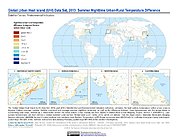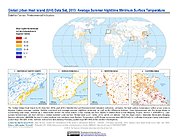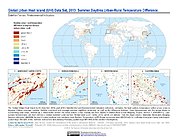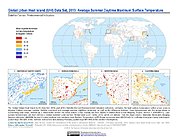Climate Impacts, Vulnerability, and Adaptation
Follow Us: Twitter Follow Us on Facebook YouTube Flickr | Share: Twitter FacebookData Sets (2 of 88) View All
Annual Global High-Resolution Extreme Heat Estimates (GEHE), v1 (
|
Delta Urban-Rural Population and Land Area Estimates, v1 (1990, 2000, 2014, 2015)Low Elevation Coastal Zone (LECZ)
To provide country-level estimates of populations and land areas in river delta- and non-delta contexts for the years 1990, 2000, 2014, and 2015 for 246 statistical areas, focusing on greater-risk zones using the global extent of low elevation zones contiguous to the coast bounded by either 5 meters or 10 meters. |
Map Gallery (4 of 547) View All
Featured Data Uses (2 of 4) View All
Using Satellites to Better Understand Carbon Dioxide EmissionsGeophysical Research Letters Carbon dioxide (CO2) is the primary greenhouse gas responsible for warming the planet. While the global distribution of carbon dioxide in the atmosphere is well known, tracking the emissions of CO2 to their sources is a challenge, especially over large urban areas. One approach uses the NASA instrument Measurement of Pollution in the Troposphere (MOPITT). Here scientists explore how carbon monoxide (CO) emission measurements from MOPITT can complement existing satellite CO2 measurements in megacities delineated by SEDAC’s Gridded Population of the World, to provide improved spatial and temporal understanding of CO2 emissions. |
Managing Urban Growth and Flood Risk in a Changing Climate/South and Southeast AsiaWorld Development Report 2010 The SEDAC data set Low-elevation Coastal Zone (LECZ) is the basis for a set of national-level indicators of the total area and population in the LECZ circa 2000. Map 2.2 (page 94), Chapter 2 of the World Development Report 2010, Managing Urban Growth and Flood Risk in a Changing Climate in South and Southeast Asia. |



